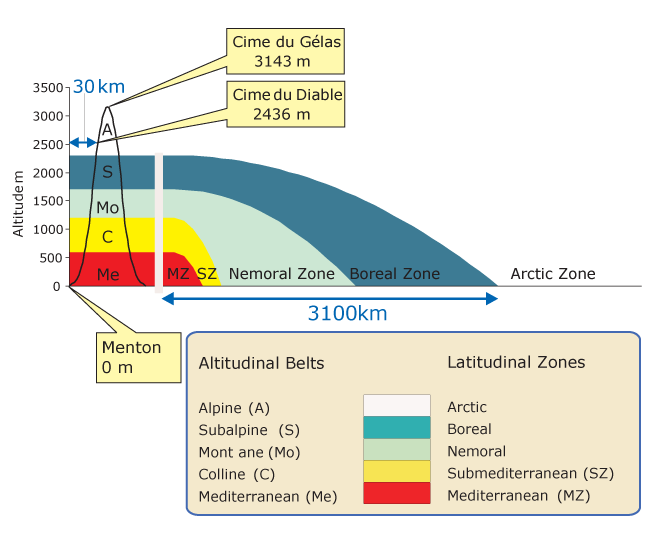 |
|
|
|
|
|
| Habitats are defined as distinct parts of the land surface characterised by a specific pattern of environmental factors such as growing season length, radiation, wind intensity, temperature, soil type, soil moisture, nutrient content etc. The habitat diversity of a particular region is a function of the range of the environmental factors. The broader the range of the environmental factors in a region, the greater the potential for distinct habitats. This is illustrated in the figure for simplified habitats determined by three different factors (F1 to F3). In reality, however, habitats are determined by a much higher number of environmental factors. |
|
|
|
| 1 – Narrow ranges of environmental factors | 2 – Broad ranges of environmental factors |
In mountainous massifs the ranges of many environmental factors are exceptionally broad. Furthermore, extreme values of the environmental factors occur within short distances leading to steep and pronounced ecological gradients: Cold, wind-blown summits exist close to hot, sun-faced slopes; deep, humid soils may be found adjacent to shallow, raw soils. Three main causes explain this phenomenon: |
|
3 - Factors causing environmental heterogeneity in mountainous regions |

4 - Overview of latitudinal zones and altitudinal belts |
|
This threefold variability in mountainous massifs leads to an extraordinary fragmentation of the landscape into different sectors, altitudinal zones, habitats, and microhabitats determined by abiotic (climatic and pedological) site factors. |
To explore this phenomenon, click on the figure below and find the various zones, habitats and microhabitats on four different spatial levels. |
29 August 2011 |
||
| |
||